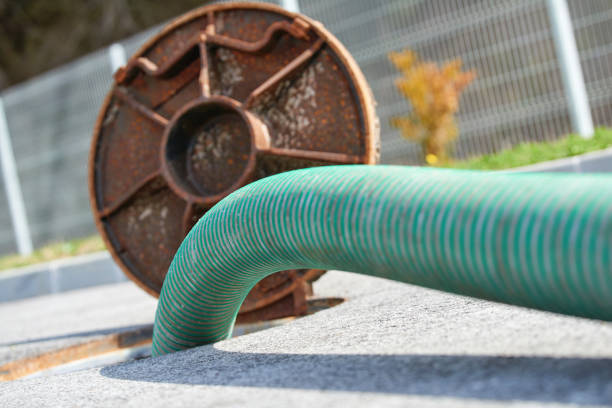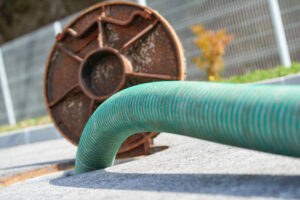If you own a waterfront property, it’s important to have a well-built dock. It can help you enjoy the Okanagan summers and increase the value of your home.
Dock Contractors Near Me can design a dock that is aesthetically pleasing and fits your needs. They can also guide you through the process of obtaining required permits.
Building a boat dock is a major project for many homeowners and requires careful planning and decision-making before construction begins. The type of dock, materials used, electrical capabilities, and permit costs should all be factored into the cost. In addition, the environment in which the dock is located can have a significant impact on the cost. A professional dock builder will be able to give you an accurate cost estimate.
The cost of a boat dock can vary significantly depending on the type, location, and size. Some docks are prefabricated and assembled, while others are made of wood and concrete. The type of boat dock also determines how much it will cost to maintain and repair. A small float dock will usually cost about $1,500 while a larger pier can cost up to $50,000.
Other expenses to consider include the cost of electricity. Electricity is an important feature for many boat dock owners, especially if they want to use their dock at night. Adding electricity to your dock will also increase its value and functionality. It is worth noting that most professional dock builders will include electricity expenses in their project quote.
It is also important to note that an experienced contractor will be able to provide you with a comprehensive inspection of your dock. They will be able to identify any potential issues and offer solutions to fix them. They will also ensure that your dock meets all state and local regulations. In addition, an inspector will look at the structure’s foundation, stair and decking, and the condition of the boat lift.
In addition to identifying issues, an experienced dock contractor will also offer maintenance plans for your dock. This will help you keep it in good shape and prevent costly repairs in the future. Some maintenance services include cleaning, algae removal, and replacing rusted metal components. On average, these services will cost $100 to $800.
Some factors that influence the cost of a dock repair are its location, soil conditions, and terrain. For example, a dock built on a river is more difficult to work on than a lake because of the fast current and extreme depth variations. Additionally, a dock built on a slope is more likely to experience erosion. Therefore, it may need to be stabilized or reconstructed at a higher cost.
Experience
When building a dock, there are many different factors to consider. A professional dock builder will take the time to visit your waterfront property and evaluate what type of dock would be best suited for your situation. They will then create an estimate for the construction project. They should never pressure you into signing a contract before giving you an estimate.
In addition to specialized construction skills, dock builders must have a thorough understanding of local geography and the body of water in which you are building your dock. They also need to understand the regulations that govern constructing docks in your area. For example, if you live in Pinellas County, your dock must be constructed at least 25 feet from the waters’ edge and be set back from the extremes of water frontage on neighboring lots. In some cases, you may need a permit to construct your dock.
Dock builders are members of the union and receive extensive training before being sent out to work on projects. They complete four years of specialized classroom and on-the-job training, as well as practical and theoretical welding instruction. In some cases, they must also pass American Welding Society and Department of Transportation welding tests.
Some contractors specialize in particular types of docks, such as residential or commercial. Others are better suited to building larger, more complex marina facilities. In some instances, the same dock contractor can be hired to construct both types of docks.
A dock is a great way to enjoy your waterfront property. However, it requires regular maintenance to keep it in optimal condition. In addition to cleaning and painting, you should regularly check for signs of wear and tear and repair any rotting or unstable areas. You should also regularly inspect the hardware of your dock for any signs of rust. In addition, you should replace any worn or damaged components.
Dock construction is regulated by state and local laws, as well as federal laws regarding navigation and environmental protection. In addition, the location of a residential dock must meet certain requirements, including setbacks from the edge of the water and other structures. The dock must also provide unobstructed access to the water and prevent interference with navigational routes. To build a residential dock, you will need a Structures, Dredging and Fill (SDF) Permit or a combined SDF/Tidal Wetland (SDF/TW) Permit.
Licenses
The construction of a dock is different from renovating a bathroom or kitchen, and it requires a permit. In addition, dock contractors need to carry special insurance policies. These policies will protect them from hefty fines if they are found to have not followed the regulations of the local government. These policies are also important for safety reasons. For example, if one of your employees accidentally leaves a pile of screws on a walkway, someone could step on them and injure themselves. In such a case, you could be held liable for medical expenses.
The first step in the dock building process is preparing the site. Your dock builder should remove any rocks or debris from the area and level it. They will then install the pilings, which are vertical supports that hold up the dock. If they are not properly installed, the dock will not be able to support your boat or other equipment.
After the pilings are in place, your dock builder can begin installing the frame. The frame is the horizontal structure that sits on top of the pilings and holds the decking, or surface, of your dock. It is essential that the frame be built according to your design. You should also make sure that it is sturdy and well-constructed.
Once the frame is in place, your dock builder can begin laying the decking. The decking should be made from a non-slip material to prevent slips and falls. It is also important to ensure that the decking is secured to the frame with lag bolts. You should test the decking before using it to make sure that it is safe and secure.
If you want to build a dock on natural waterways, you will need to apply for a permit from the Army Corps of Engineers. This permit will require a detailed plan and may take up to a few months to obtain. The permit will also include a description of the proposed project and how it will meet local requirements.
Depending on your location, you may need to obtain a permit from the local government for dock construction. These permits are generally very time-consuming, but they will help you avoid legal complications later on. They will also make the construction process more convenient and efficient. In addition, they will help you save money by avoiding costly delays and unforeseen expenses.
Insurance
Marine contractors often have a difficult time finding insurance policies that will protect their business. Luckily, there are specialty policies available that offer coverage for this type of work. These insurance policies cover everything from equipment and materials to liability claims. They can also help mitigate financial losses during construction phases.
In addition to standard dock and boat lift construction, some dock builders specialize in providing maintenance services for existing structures. This includes cleaning, staining, resurfacing and painting to prevent deterioration and insect infestations. They can also repair or replace damaged decking, stairs and handrails. In addition, many marinas require regular inspections to ensure they meet safety standards. These inspections can be costly, so it’s important to find a dock builder with experience and expertise in this area.
Some dock builders are required to carry USL&H (United States Longshore and Harbor Workers’ Compensation) insurance. This is an important requirement because it covers the costs of worker injuries that may occur during the course of their work.
The best way to determine if a dock contractor is insured is by checking the policy. The insurance company should be licensed to operate in your state and have a rating system that measures their financial stability. You can also ask the company how they fund their policies. Some well-known insurance companies receive state funding, while others are self-funded and have their own source of capital.
For homeowners, a new dock is usually covered by their homeowner’s insurance policy as an “other structure.” However, if the dock is part of a commercial property, it requires a commercial insurance policy. A commercial policy offers coverage for fire, flood and wind damage, which are common perils to waterfront businesses. It can also include business interruption coverage, which is essential if a disaster causes the business to shut down.
Dock building is a complex task that involves a number of unique risks and complexities. Choosing the right partner is critical to ensure the project is completed successfully and efficiently. A qualified marine contractor will have years of experience and can navigate the permitting process, ensure structural integrity and meet environmental requirements.


